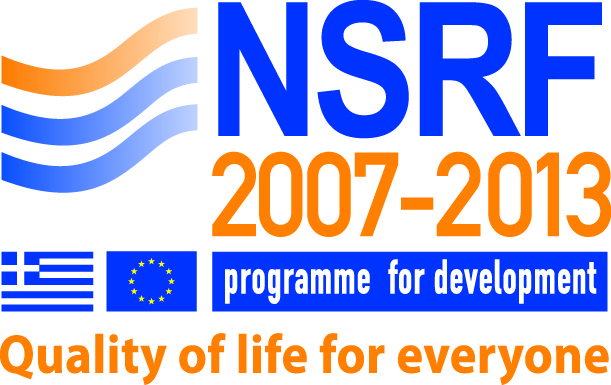Please use this identifier to cite or link to this item:
https://olympias.lib.uoi.gr/jspui/handle/123456789/14238Full metadata record
| DC Field | Value | Language |
|---|---|---|
| dc.contributor.author | Enotiadis, A. | en |
| dc.contributor.author | Litina, K. | en |
| dc.contributor.author | Gournis, D. | en |
| dc.contributor.author | Rangou, S. | en |
| dc.contributor.author | Avgeropoulos, A. | en |
| dc.contributor.author | Xidas, P. | en |
| dc.contributor.author | Triantafyllidis, K. | en |
| dc.date.accessioned | 2015-11-24T17:36:22Z | - |
| dc.date.available | 2015-11-24T17:36:22Z | - |
| dc.identifier.issn | 1520-6106 | - |
| dc.identifier.uri | https://olympias.lib.uoi.gr/jspui/handle/123456789/14238 | - |
| dc.rights | Default Licence | - |
| dc.subject | layered silicate nanocomposites | en |
| dc.subject | nonlinear block-copolymers | en |
| dc.subject | double gyroid phase | en |
| dc.subject | mechanical-properties | en |
| dc.subject | thermoplastic elastomers | en |
| dc.subject | infrared reflectance | en |
| dc.subject | catalytic production | en |
| dc.subject | raman-spectroscopy | en |
| dc.subject | polymer | en |
| dc.subject | films | en |
| dc.title | Nanocomposites of Polystyrene-b-Poly(isoprene)-b-Polystyrene Triblock Copolymer with Clay-Carbon Nanotube Hybrid Nanoadditivesm | en |
| heal.type | journalArticle | - |
| heal.type.en | Journal article | en |
| heal.type.el | Άρθρο Περιοδικού | el |
| heal.identifier.primary | Doi 10.1021/Jp309361b | - |
| heal.identifier.secondary | <Go to ISI>://000314205200019 | - |
| heal.language | en | - |
| heal.access | campus | - |
| heal.recordProvider | Πανεπιστήμιο Ιωαννίνων. Σχολή Θετικών Επιστημών. Τμήμα Μηχανικών Επιστήμης Υλικών | el |
| heal.publicationDate | 2013 | - |
| heal.abstract | Polystyrene-b-polyisoprene-b-polystyrene (PS-b-PI-b-PS), a widely used linear triblock copolymer of the glassy-rubbery-glassy type, was prepared in this study by anionic polymerization and was further used for the development of novel polymer nanocomposite materials. Hybrid nanoadditives were prepared by the catalytic chemical vapor deposition (CCVD) method through which carbon nanotubes were grown on the surface of smectite clay nanolayers. Side-wall chemical organo-functionalization of the nanotubes was performed in order to enhance the chemical compatibilization of the clay-CNT hybrid nanoadditives with the hydrophobic triblock copolymer. The hybrid clay-CNT nanoadditives were incorporated in the copolymer matrix by a simple solution-precipitation method at two nanoadditive to polymer loadings (one low, i.e., 1 wt %, and one high, i.e., 5 wt %). The resulting nanocomposites were characterized by a combination of techniques and compared with more classical nanocomposites prepared using organo-modified clays as nanoadditives. FT-IR and Raman spectroscopies verified the presence of the hybrid nanoadditives in the final nanocomposites, while X-ray diffraction and transmission electron microscopy proved the formation of fully exfoliated structures. Viscometry measurements were further used to show the successful incorporation and homogeneous dispersion of the hybrid nanoadditives in the polymer mass. The so prepared nanocomposites exhibited enhanced mechanical properties compared to the pristine polymer and the nanocomposites prepared by conventional organo-clays. Both tensile stress and strain at break were improved probably due to better interfacial adhesion of the clay-CNT hybrid of the flexible rubbery PI middle blocks of the triblock copolymer matrix. | en |
| heal.publisher | American Chemical Society | en |
| heal.journalName | Journal of Physical Chemistry B | en |
| heal.journalType | peer reviewed | - |
| heal.fullTextAvailability | TRUE | - |
| Appears in Collections: | Άρθρα σε επιστημονικά περιοδικά ( Ανοικτά) | |
Files in This Item:
| File | Description | Size | Format | |
|---|---|---|---|---|
| Gournis-2013-Nan.pdf | 456.6 kB | Adobe PDF | View/Open Request a copy |
This item is licensed under a Creative Commons License





